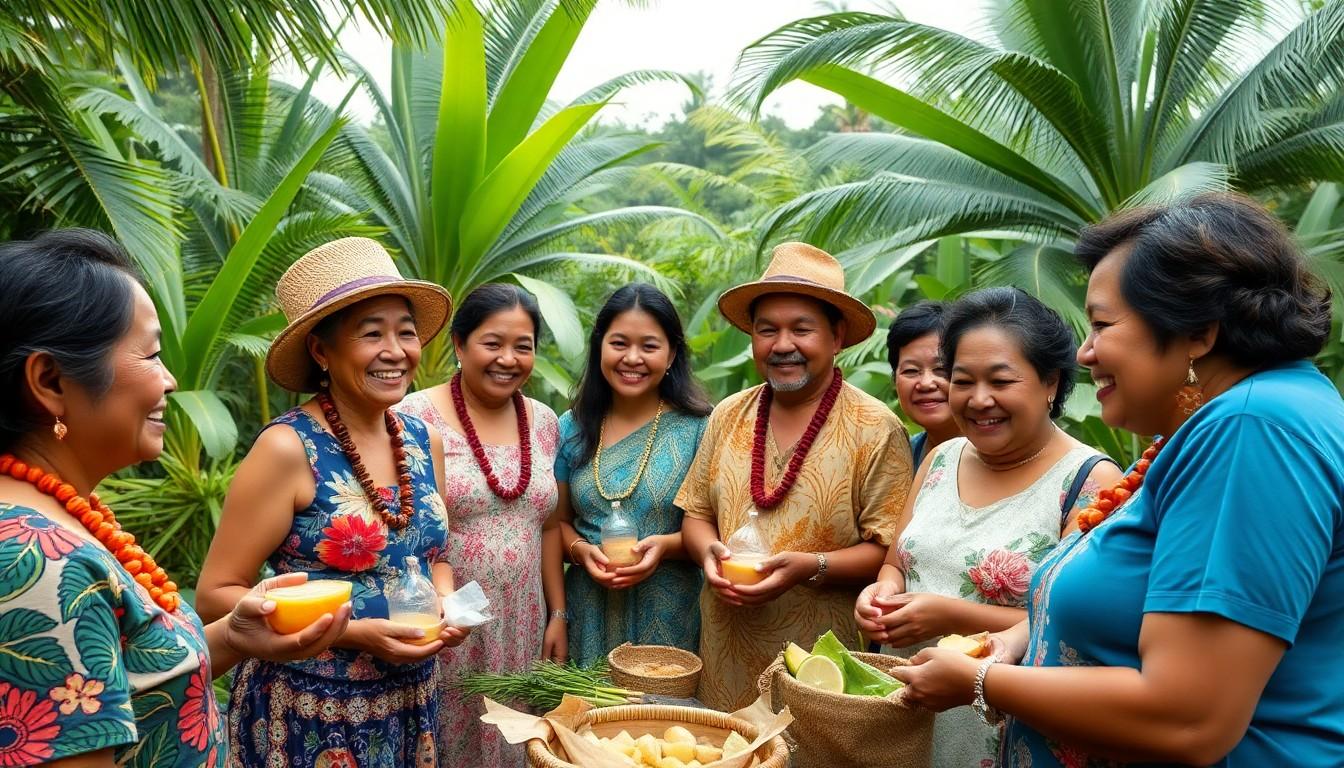The Best Fluffy Pancakes recipe you will fall in love with. Full of tips and tricks to help you make the best pancakes.
In a world where health trends come and go faster than a TikTok dance challenge, Pacific health education stands out as a beacon of knowledge. It’s not just about learning how to dodge the latest fad diets or mastering the art of kale smoothies. It’s about understanding the unique health needs of Pacific Island communities and empowering them with the tools to thrive.
Overview Of Pacific Health Education
Pacific health education serves as a crucial framework that focuses on the unique health challenges faced by Pacific Island communities. Emphasis lies in culturally relevant approaches that resonate with the beliefs and practices of these populations. Tailored programs address chronic diseases prevalent in the region, such as diabetes and hypertension.
Education initiatives often incorporate traditional healing practices alongside modern health strategies. Communities benefit from workshops and resources designed to improve nutritional knowledge and physical activity. Real-life examples highlight the impact, with participants reporting improved health outcomes after engaging in educational sessions.
Local health professionals play a vital role in facilitating these educational programs. They understand the cultural context, making their insights invaluable for community engagement. Integration of local customs in health education fosters trust and enhances participation.
Collaboration among governmental, non-governmental organizations, and community leaders strengthens these educational efforts. Collective responsibility ensures that resources are effectively mobilized to meet the health needs of residents. Strategies include utilizing media campaigns to spread awareness and motivate healthy lifestyle changes.
Success stories emerge from individuals who embrace the principles taught through Pacific health education. Active involvement leads to a shift toward healthier living, ultimately reducing the reliance on medical interventions. Continuous evaluation of these educational programs ensures they evolve in response to the changing health landscape of Pacific Island communities.
Importance Of Pacific Health Education

Pacific health education plays a crucial role in enhancing well-being within communities. This framework specifically addresses the unique health needs of Pacific Islanders, focusing on effective strategies that resonate culturally.
Cultural Relevance
Culturally relevant approaches are essential in Pacific health education. Programs integrate traditional practices alongside modern health strategies, creating a bridge between past and present. Participants find that these tailored initiatives, which consider local beliefs, lead to greater acceptance and effectiveness. Health messages often align with indigenous knowledge, ensuring that educational content is meaningful. For example, dietary recommendations may include local foods that are both familiar and nutritious. By honoring cultural traditions, educational efforts cultivate respect and engagement within communities.
Community Engagement
Community engagement remains vital for the success of health education programs. Local health professionals actively participate in initiatives, using their cultural understanding to build trust. Workshops and seminars encourage open conversations about health, enabling sharing of knowledge among peers. Support from community leaders enhances motivation for health improvements. Collaborative efforts with governmental and non-governmental organizations facilitate resource mobilization and outreach. Media campaigns further amplify messages, reaching a broader audience and encouraging lifestyle changes. Success stories from community members reinforce the positive impact of these programs, showcasing tangible benefits of Pacific health education.
Current Trends In Pacific Health Education
Current trends in Pacific health education reflect a dynamic approach to improving the health of local communities. As technology advances, more programs incorporate digital solutions to enhance learning and accessibility.
Digital Learning Platforms
Digital learning platforms increasingly support Pacific health education initiatives. These platforms enable health education materials to reach remote areas quickly and efficiently. Interactive modules promote engagement, making it easier for individuals to understand health topics. Mobile applications also play a crucial role, offering personalized health tracking and resources tailored to local needs. Furthermore, social media campaigns amplify outreach efforts, empowering communities to share their experiences and successes.
Collaborative Programs
Collaborative programs strengthen Pacific health education efforts through partnerships. Local health organizations, schools, and community leaders unite to create impactful initiatives. Workshops and seminars foster knowledge sharing, encouraging dialogue around health issues. Government and non-governmental organizations provide essential resources and support. By combining insights from various sectors, these collaborations address specific health needs more effectively. Engaging community members in the development and execution of these programs ensures that they resonate deeply, fostering lasting changes in health behaviors.
Challenges Facing Pacific Health Education
Pacific health education encounters several challenges that hinder its effectiveness in addressing community health needs. Resource limitations and socioeconomic factors significantly impact the delivery of health education programs.
Resource Limitations
Limited funding restricts the availability and sustainability of health education initiatives. Many programs depend heavily on external grants or donations, resulting in fluctuations in resource allocation. Inadequate access to educational materials and technology further hampers outreach efforts. Rural areas often experience the greatest deficits in resources, affecting their ability to implement effective health education strategies. Additionally, shortages of trained health professionals complicate the situation. Communities struggle to provide ongoing support, training, and follow-up care, undermining overall health education outcomes.
Socioeconomic Factors
Socioeconomic factors play a pivotal role in shaping health education outcomes in Pacific Island communities. High levels of poverty often correlate with limited access to nutritious food and healthcare services. Education levels also influence health literacy, as individuals with less education may struggle to understand health messages. Employment instability can divert attention away from health priorities, limiting engagement in health education programs. Cultural stigma surrounding certain health issues may also discourage individuals from participating. Understanding these socioeconomic barriers is essential for developing more effective health education initiatives that resonate with community members’ realities.
Future Directions For Pacific Health Education
Pacific health education faces numerous opportunities for improvement and growth. Effective policies can enhance its reach and impact within communities.
Policy Recommendations
Strengthened partnerships among local governments, health organizations, and educational institutions can enhance resource mobilization. Providing consistent funding for health initiatives enables programs to expand and adapt to changing needs. Implementing culturally sensitive policies encourages wider participation in health education activities. Priority should also be given to recruiting and training more local health professionals to ensure sustainability. Establishing clear guidelines for integrating traditional practices into modern healthcare will foster community trust and engagement. Overall, a holistic approach ensures that programs remain relevant and effective in addressing health challenges.
Innovative Approaches
Digital technology offers innovative solutions to enhance Pacific health education. Using online training platforms facilitates access to educational resources in remote areas. Interactive applications promote user engagement while providing personalized health tracking. Social media serves as a tool for sharing success stories, inspiring others to adopt healthier lifestyles. Furthermore, incorporating virtual workshops broadens participation, allowing for diverse voices within the community. Emphasizing local content in digital materials ensures relevance, connecting participants with familiar cultural practices. By embracing these innovative approaches, Pacific health education can better address the unique needs of its communities.
Conclusion
Pacific health education stands as a beacon of hope for communities navigating complex health challenges. By integrating traditional practices with modern strategies it creates a holistic approach that resonates deeply with local cultures. The emphasis on community engagement and collaboration ensures that health initiatives are not only relevant but also effective.
As digital solutions continue to emerge the potential for reaching remote areas and enhancing accessibility grows. Addressing barriers such as resource limitations and socioeconomic factors will be crucial in fostering sustainable health education. With a commitment to innovation and cultural sensitivity Pacific health education can evolve to meet the ever-changing needs of its communities, paving the way for healthier futures.


